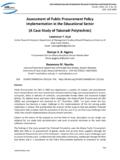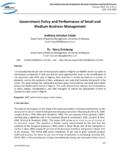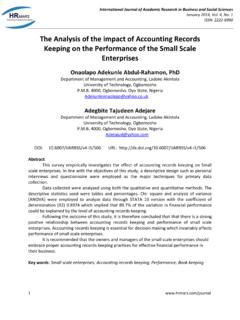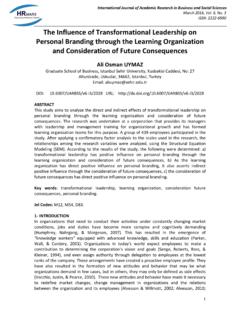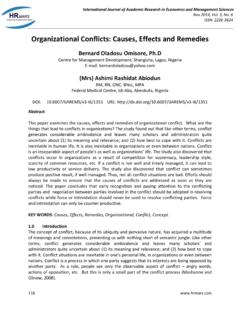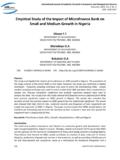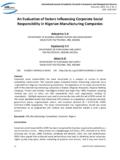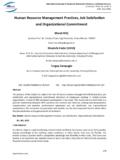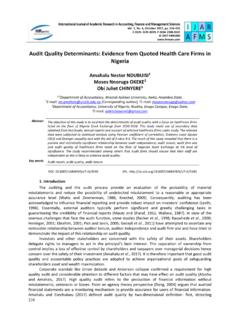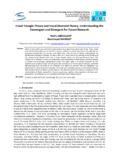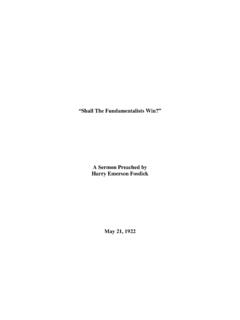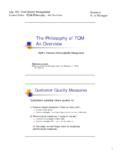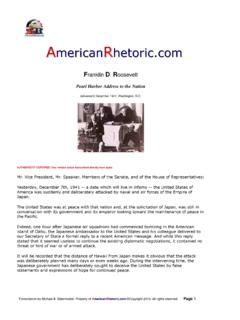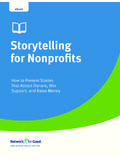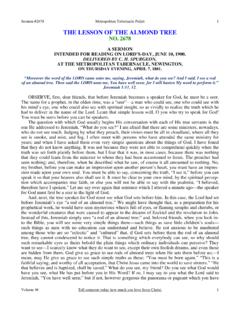Transcription of Destructive Role of Employee Silence in Organizational Success
1 International Journal of Academic Research in Business and Social Sciences November 2012, Vol. 2, No. 11 ISSN: 2222-6990 275 Destructive Role of Employee Silence in Organizational Success Malikeh Beheshtifar Management Department, Rafsanjan Branch, Islamic AZAD University, Iran Hossein Borhani Management Department, Rafsanjan Branch, Islamic AZAD University, Iran Mahmood Management Department, Kerman University of Medical Sciences, Iran Abstract Employees are regarded as major sources of change, creativity, learning, and innovation, which are critical factors to the Success of organizations.
2 However, many employees choose not to voice their opinions and concerns about matters in their organizations. Silence can convey approval and sharing or disfavor and opposition, thus becoming a pressure mechanism for both individuals and organizations. Through Silence , Organizational members suppress concerns about difficult or troubling personal as well as Organizational issues. Moreover, there are three types of Employee Silence as Acquiescent Silence , Defensive Silence , and Pro-social Silence . Fear, embarrassment, narrow conceptions of ethical responsibility, implicated friends, lack of opportunity for voice, and lack of Organizational political skills are factors to cause Silence .
3 Employee Silence has many effects on the employees themselves. Indifferent employees, often products of ignored Employee Silence , tend to feel like cogs at machinery factories, developing the attitude to get along, go along . Indifferent employees cause the organization to lose money and function poorly. If Employee Silence does occur, communication suffers and as a result harms the overall functioning of the organization. However, it is not easy to break Silence climate of employees and their managers. Meanwhile, it is suggested to regulate some rules for supporting the employees' attitudes, to make decisions about the work groups of the organizations and to establish some programs in order to improve the human resource management for training skills of decision making.
4 Keywords: Silence , Employee Silence , Organizational Success Introduction Introduced in 1974, the spiral of Silence theory is one that explores hypotheses to determine why some groups remain silent while others are more vocal in forums of public discourse. The theory contends that the Silence displayed by certain groups is due to the unpopularity of their opinions in the public sphere. While the majority groups are supported by and consequently International Journal of Academic Research in Business and Social Sciences November 2012, Vol.
5 2, No. 11 ISSN: 2222-6990 276 have the willingness to speak out on their issues, the minority groups remain silent due to a fear of isolation (Neill, 2009). During the 1980 s, Silence and voice were studied through the lens of justice theory. Issues of fairness and mechanisms of voice in Organizational settings were the main focus. The exposure of corporate scandals and ethics violations brought a scholarly focus on whistle blowing and boat rocking. In the 1990 s, scholars continued to focus on voice mechanisms and it was not until the year 2000, as a result of Morrison and Milliken s highly publicized article in the Academy of Management Review, that scholars began to focus on the relation between management practices, Organizational policies and Silence and other antecedents to a climate of Silence (Bogosian, 2012).
6 Bowen and Blackmon (2003) used the spiral of Silence theory to support their writing on the dynamics of gays and lesbians choice to speak out or remain silent within workplace organizations. The authors address the willingness to speak out dynamic by positing that there is a second spiral of Silence that exists on a micro level within the workgroup and organization . Morrison and Milliken (2000) proposed that when most members of an organization choose to keep silent about Organizational matters, Silence becomes a collective behavior, which is referred to as Organizational Silence .
7 Organizational Silence may take various forms, such as collective Silence in meetings, low levels of participation in suggestion schemes, low levels of collective voice, and so forth (Huang, et al., 2005). Employees are regarded as major sources of change, creativity, learning, and innovation, which are critical factors to the Success of organizations. However, many employees choose not to voice their opinions and concerns about matters in their organizations. While in a changing world, organizations need for employees who express their ideas.
8 Also, employees choose organizations in which they can express themselves. Because, both employees and managers have high motivation and high performance in a place that Silence doesn't exist. How to break Silence culture and establish a free climate to encourage employees' voice are big challenges faced to mangers (Liu, et al. 2009). In the current study, we focus on concept of Silence and Employee Silence . Also, we will survey the dimensions, and outcomes of Employee Silence as a barrier to Success in workplace. Concept of Employee Silence Is Silence gold?
9 Silence is associated with many virtues: modesty, respect for others, prudence, decorum. People Silence themselves to avoid embarrassment, confrontation and other perceived dangers (Perlow & Williams, 2003). But, Silence can convey approval and sharing or disfavor and opposition, thus becoming a pressure mechanism for both individuals and organizations (Bagheri, et al. 2012). International Journal of Academic Research in Business and Social Sciences November 2012, Vol. 2, No. 11 ISSN: 2222-6990 277 Early definitions of Silence equated it with loyalty and the assumption that nothing was wrong if concerns were not being voiced.
10 But researchers today have shown that a climate of Silence can work against desired Organizational outcomes (Aylsworth, 2008). Defining Silence as an Employee s motivation to withhold or express ideas, information and opinions about work-related improvements (Donaghey, et al. 2011). Pinder and Harlos (2001) defined Silence as the absence of voice as it has its own form of communication, involving a range of cognitions, emotions or intentions such as objection or endorsement. Additionally, they recognized that the phenomenon of Employee Silence might take on different meanings depending on its underlying motives.
